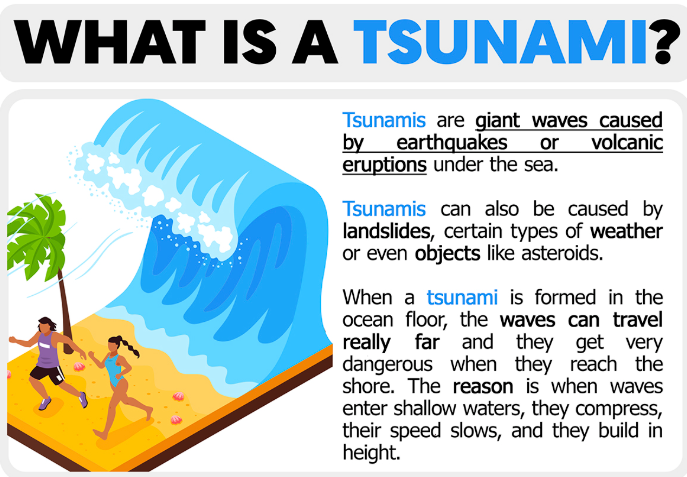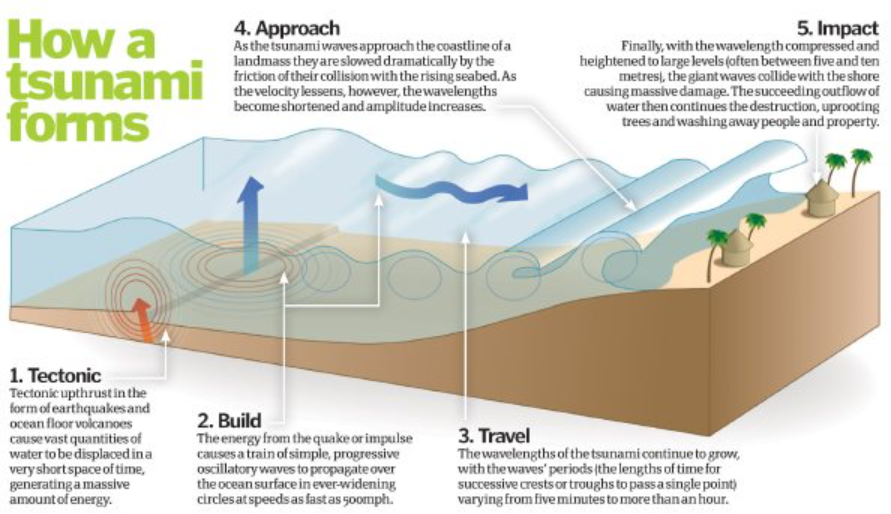How the 2004 Indian Ocean quake transformed tsunami science
(Source – The Hindu, International Edition – Page No. – 7)
| Topic: GS3 – Disaster Management |
| Context |
| ● The 2004 Indian Ocean earthquake and tsunami, one of the deadliest natural disasters in history, highlighted the vulnerability of coastal regions to massive seismic events.
● It spurred advancements in tsunami warning systems and scientific research. ● Lessons learned from this disaster continue to shape global disaster management strategies. |


20th Anniversary of the 2004 Indian Ocean Earthquake and Tsunami
Overview of the 2004 Disaster
- On December 26, 2004, a magnitude 9.1 earthquake struck off the coast of Sumatra, triggering one of the deadliest tsunamis in recorded history.
- The earthquake originated 30 km below the ocean floor in the Sunda Trench, where the Indo-Australian plate subducts beneath the Burma microplate.
- The rupture extended over a 1,300 km stretch of the plate boundary, affecting Indonesia, Bangladesh, India, Sri Lanka, Thailand, and other nations.
- The tsunami impacted 17 countries along the Indian Ocean, causing over 227,000 deaths and displacing 1.7 million people.
Subsequent Disasters and Lessons Learned
- In March 2011, a magnitude 9.1 earthquake off Japan triggered a tsunami and the Fukushima nuclear disaster, showing the ongoing vulnerability to natural disasters.
- The 2004 tsunami highlighted the unpredictability of such events and underscored the necessity for disaster preparedness and resilience.
Scientific Advancements Post-Tsunami
- The 2004 tsunami was a shock to researchers, as it was the first recorded massive tsunami along India’s eastern seaboard.
- The Indian Tsunami Early Warning Centre (ITEWC) was set up in 2007, improving earthquake and tsunami monitoring.
- ITEWC operates seismological stations and ocean monitoring systems to issue early warnings for the Indian Ocean region, with alerts sent within 10 minutes of detecting potential tsunami-producing earthquakes.
Impact on Tsunami Research
- The tsunami prompted the development of tsunami geology, with significant findings in India and other countries.
- Excavations in Mahabalipuram uncovered evidence of a tsunami from the same period as the 2004 disaster.
- Researchers studied sedimentary deposits along the coast, discovering more ancient tsunamis and establishing a new scientific field focused on tsunami research.
Nuclear Vulnerabilities and Future Risks
- The 2004 tsunami revealed vulnerabilities in nuclear power plants along India’s coast.
- Though the Kalpakkam nuclear power plant withstood the tsunami, it was automatically shut down due to rising water levels, highlighting potential risks to nuclear facilities.
- Following the Fukushima disaster, the risks to nuclear plants from tsunamis became clearer, spurring calls for increased safety measures.
Emerging Tsunami Risks
- The Makran Coast, spanning Iran and Pakistan, poses a potential tsunami threat to India’s west coast, including Mumbai, where nuclear reactors are located.
- Research has also identified other seismic risks, including slow seismic slips that could provide clues about impending earthquakes and tsunamis, enhancing predictive capabilities.
Ongoing Research and Seismological Milestones
- The 2004 event marked a significant milestone in seismological research, offering valuable data on earthquake generation and related hazards.
- Studies on seismic slips at plate boundaries and pre-earthquake phenomena have advanced, offering new insights into earthquake prediction and risk mitigation strategies.
| PYQ: In December 2004, tsunami brought havoc on 14 countries including India. Discuss the factors responsible for the occurrence of Tsunami and its effects on life and economy. In the light of guidelines of NDMA (2010) describe the mechanisms for preparedness to reduce the risk during such events. (250 words/15m) (UPSC CSE (M) GS-3 2017) |
| Practice Question: Analyze the scientific advancements in tsunami prediction and preparedness post the 2004 Indian Ocean earthquake and tsunami. How have these developments contributed to global disaster risk reduction? (250 Words /15 marks) |
For more such UPSC related Current Affairs, Check Out –ISFR-2023: Marginal Gains in Green Cover Mask Alarming Loss of Natural Forests


